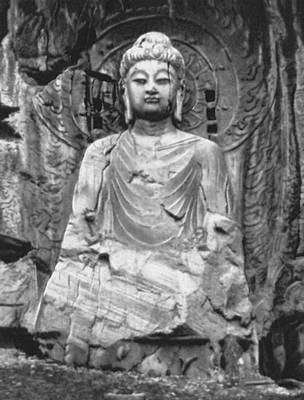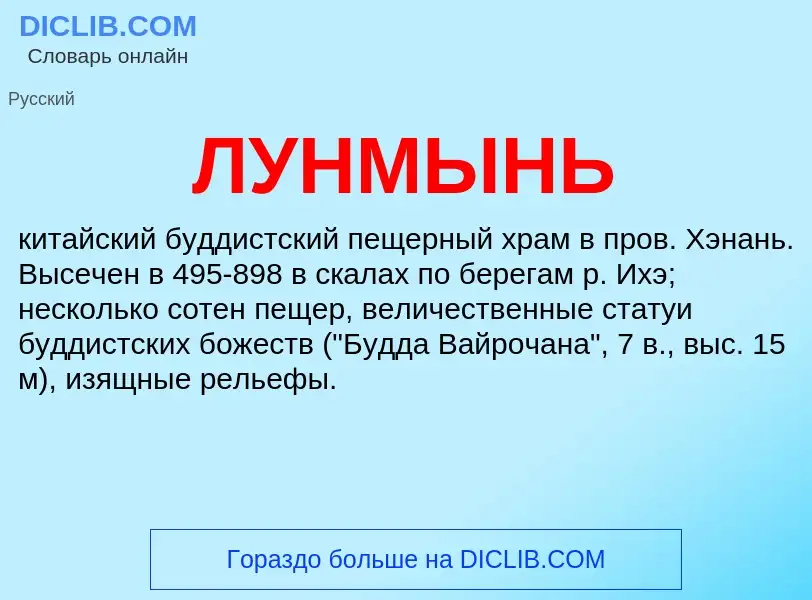Enter a word or phrase in any language 👆
Language:
Translation and analysis of words by artificial intelligence
On this page you can get a detailed analysis of a word or phrase, produced by the best artificial intelligence technology to date:
- how the word is used
- frequency of use
- it is used more often in oral or written speech
- word translation options
- usage examples (several phrases with translation)
- etymology
What (who) is Лунмынь - definition
СТРАНИЦА ЗНАЧЕНИЙ
ЛУНМЫНЬ
китайский буддистский пещерный храм в пров. Хэнань. Высечен в 495-898 в скалах по берегам р. Ихэ; несколько сотен пещер, величественные статуи буддистских божеств ("Будда Вайрочана", 7 в., выс. 15 м), изящные рельефы.
Лунмынь
один из крупнейших буддийских пещерных храмов Китая. Высечен в 495-898 в известняковых скалах по берегам реки Ихэ (в 15 км к югу от города Лоян, провинция Хэнань). Состоит из нескольких сотен пещер, главные из которых (Биньян, 500-523, Гуян, 495-575, и Фынсянь, 627-675) включают статуи буддийских божеств (в том числе Будды Вайрочана, 672-676, высота около 15 м), рельефы, изображающие монахов, небесных танцовщиц, торжественные процессии. Для монументально-величественной скульптуры Л. характерны изящество пропорций, графическая чёткость прорисовки деталей, сочетающаяся с пластически-мягкой трактовкой форм.
Лит.: Лунмынь шику (Каменные пещеры Лунмыня), Пекин, 1959.

Статуя Будды Вайрочана в пещерном храме Лунмынь. Известняк. 672-676.
Лунмынь (пещеры)
Пещеры Лунмэнь; Лунмэн; Лунмэнь
Лунмы́нь () — комплекс буддийских пещерных храмов в китайской провинции Хэнань, в 12 км к югу от Лояна. Наряду с Могао и Юньганом считается одним из трёх наиболее значительных пещерных храмовых комплексов Китая.
Wikipedia
Лунмынь
Лунмы́нь (Лунмэ́нь) — китайский топоним:
- Лунмынь (пещеры) — комплекс буддийских пещерных храмов в провинции Хэнань.
- Лунмынь (уезд) — уезд городского округа Хойчжоу провинции Гуандун.









